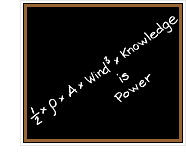CHAPTER 3: LEARNING AND TRANSFER
Source: “How People Learn”, Bransford, et. al, 2000, pp. 51
- the degree of mastery of the original subject, (p.53)
- the degree to which people learn with understanding rather than merely memorize set of facts or follow a set of procedures, (p.55)
- the time given to adequately process the information, (p.56)
- the degree of feedback and meaningful applications of the learning process, (p.59)
- the learner’s motivation derived internally and externally, (p.60-61)
- the context of original learning, (p.62)
- the instruction that students represent problems at higher levels of abstraction, (p.63)
- the function of relationships between what is learned and what is tested, (p.63)
- the ability of the learner to solve a set of transfer problems right after they have engaged in an initial learning task, (p.66)
- the awareness of students that as learners they actively monitor their learning and strategies and resources and assess their readiness for particular tests and performances. (p.67)
THINKING OUT LOUD
 Learning becomes effective when it becomes relevant to one’s personal experience and when it makes one a better person. It becomes valuable if it cause positive change to other people, to the society, and to the environment. It becomes important when the classroom experience reaches out to society and answers its needs. It becomes indispensable when young minds change the course of history.
Learning becomes effective when it becomes relevant to one’s personal experience and when it makes one a better person. It becomes valuable if it cause positive change to other people, to the society, and to the environment. It becomes important when the classroom experience reaches out to society and answers its needs. It becomes indispensable when young minds change the course of history.
From what the today’s world has become, it is no doubt the product of learning. Technology, democracy, medicine, music, communication, transportation, government, laws, military, and so many others were born from the pursuit of making learning relevant to real life experience. Learning searched for answers. Learning brought these changes. Learning showed its power.
Chapter 3, then, is but an affirmation and celebration of the power of learning. It reemphasizes the importance and benefit of “transfer learning”. Teachers have the crucial job of making certain that the world’s future are in good hands and that today’s learners will transfer their learning to the betterment of themselves and of society. The world is too precious to be left to ignorance and arrogance. Teachers must let their students be aware that transfer learning has made life improved than before and that their gratitude must be shown in doing purposeful learning and positive transfer for a better future.
However, what we have today has also destructive flaws. There is hatred from the Hezbollah, Al Quaida, Muslim extremists, and Neo Nazis. There is the nuclear ambition of
Chapter 3 is the conscience from which we are to use to correct the flaw. We may not be able to directly solve these problems but we can do our share to fight for change. Our teaching should present these problems and should spur our students to search for better solutions and for positive actions. Our students should apply their learning for the betterment of the world they live in.
 With the internet, we have a valuable tool to make our students as global-learners, as global-problem solvers. We can give our students the necessary information from any place and in real time to make their analysis relevant. The internet can, in turn, show their positive ideas to the world.
With the internet, we have a valuable tool to make our students as global-learners, as global-problem solvers. We can give our students the necessary information from any place and in real time to make their analysis relevant. The internet can, in turn, show their positive ideas to the world.
We live in a time of unlimited possibilities. We have the opportunity to educate our learners to use their “knowledge-power” to make a difference.







